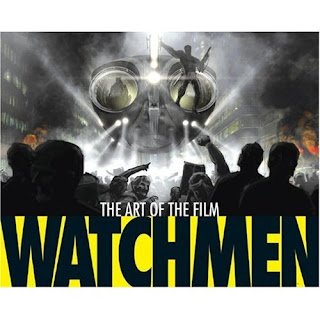 This will appear in the fall's International Journal of Comic Art, but I'll give Rob a plug here as well.
This will appear in the fall's International Journal of Comic Art, but I'll give Rob a plug here as well.Robert G. Weiner. Marvel Graphic Novels and Related Publications: An Annotated Guide to Comics, Prose Novels, Children's Books, Articles, Criticism and Reference Works, 1965-2005. McFarland, 2008. $49.95. ISBN-13: 978-0786425006.
www.mcfarlandpub.com or 800-253-2187.
Rob Weiner, a librarian at Texas Tech University, has attempted a Herculean task in this amazingly ambitious annotated bibliography. Marvel’s publishing history runs for over sixty years and, through licensing, covers dozens of publishers. In his preface, he notes, “This volume is intended to be a handbook, not only for the Marvel Comics fan and collector, but also for academic, public, and school librarians, who want to include Marvel graphic novels in their collections. While many of the publications in this work are known to most Marvel collectors, it is my hope that even the most knowledgeable collectors will find something new in it. There are some entries in this volume, which, to my knowledge, describe material not documented anywhere else.”
Weiner lists citations with annotations for all kinds of publications from Marvel. He has attempted to bring some order to the citations by breaking them up into seventeen categories, three of which are appendices, along with two introductory “Background Highlights” sections on the history of both graphic novels and Marvel Comics.
A typical citation, chosen at random (p. 73), reads:
DeFalco, Tom, Pat Olliffe, Al Williamson, et al. Spider-Girl: A Fresh Start. New York: Marvel, 1999. ISBN: 0785107207. Reprints Spider-Girl 1-2.
Peter Parker’s teen-age daughter, May Day, inherits amazing powers from her father. She becomes Spider-Girl, much to her father’s dismay. She defeats Crazy Eight and encounters Dark Devil. One can see both the strengths and limitations of bibliography here. One is given the basic information about the book, along with a plot summary of the story and who Spider-Girl actually is, except that in standard Marvel continuity, Spider-Man does not have any children. In fact, since 2008, he is not even married – a deal with the devil erased his marriage to save his Aunt May’s life. So one must come to a project like this with a good bit of existing knowledge, namely that Marvel published a series of comic books set in their character’s ‘future’ in which the normal aging not usually permitted fictional characters had taken place.
As mentioned above, Weiner broke up the book into sections. The major category “Marvel’s Superheroes” is divided into sections like “Major Characters, Teams, and Team-Ups” which is then further reduced into subsections like “Conan / Kull” and “Fantastic Four / Dr. Doom and Inhumans.” A sampling of other subsections include “Epic Comics Graphic Novels,” “Marvel/DC Crossovers,” “Movies and Television,” “Prose Novels” and “Scholarly Publications,” the last of which cites several articles from this Journal. The three appendices include single line citations for 2005 publications, game books, and possibly unpublished books for which an ISBN exists.
As with any project of this size and complexity, one can quibble. Weiner’s introduction is too concerned with rationalizing the importance of the study of comic books. Anyone willing to even glance at his bibliography does not need to read an argument which sums up “Epic Stories like Earth X, Kree/Skrull War and Marvels exhibit as much character development, and thought, as any work by Shakespeare, Stephen King, F. Scott Fitzgerald, Charles Dickens, Leo Tolstoy, Margaret Mitchell, or Jack London.” (p. 7) By engaging theoretical critics, Weiner gives them both too much credibility and ammunition. His work is a bibliography of an aspect of popular culture, and as such, does not need defense or apology, let alone attempting to reach an intellectual high ground. Any library or scholar interested in studying Marvel Comics, and especially their publishing history, should add this bibliography to their collection.



